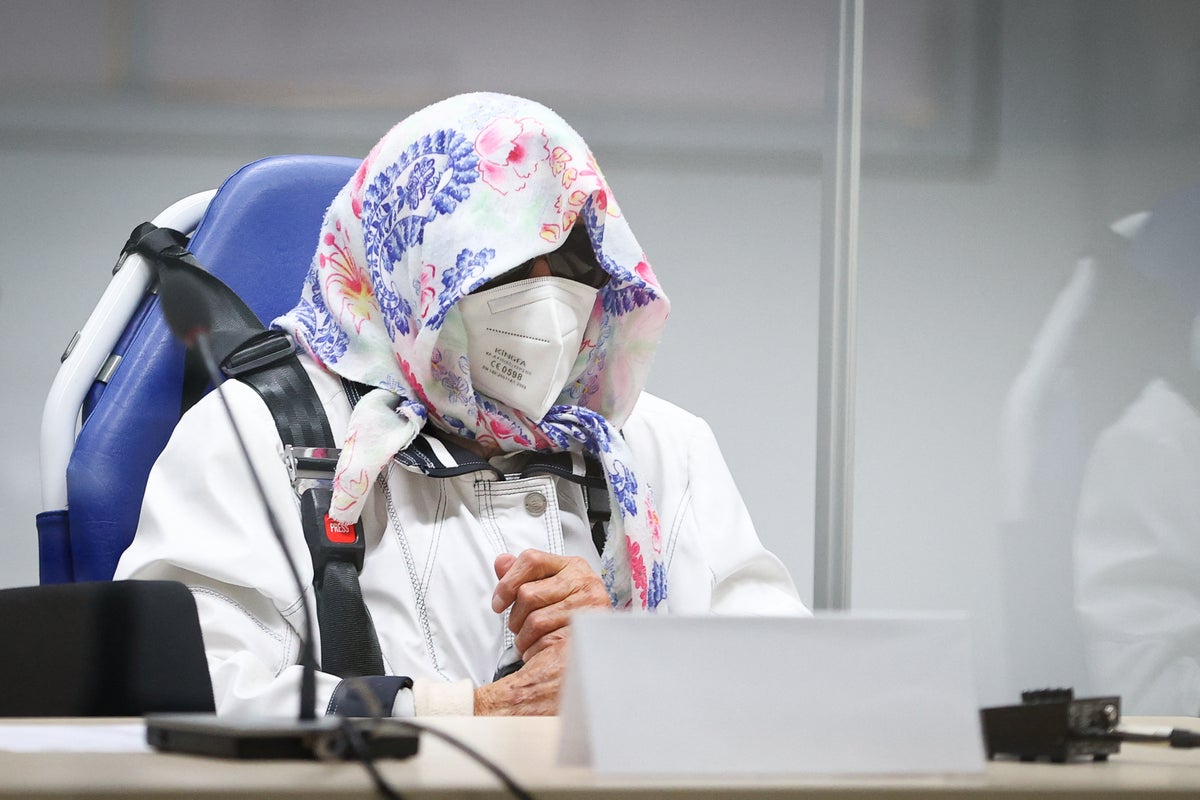
A 97-year-old former secretary at the Stutthof Nazi concentration camp has been convicted of contributing to the murder of more than 10,500 people during the Second World War
The district court in the northern town of Itzehoe handed Irmgard Furchner a two-year suspended sentence for aiding and abetting the murder of 10,505 people and the attempted murder of five people. The indictment had originally charged Furchner with aiding and abetting the murders of 11,412 people.
She was sentenced under juvenile law, owing to the fact that she was aged between 18 and 19 the time the crimes were committed.
Furchner worked as a stenographer and typist to the SS commander at the notorious concentration camp between 1943 and 1945.
She was accused of being part of the accessory to the function of the camp, where she was alleged to have “aided and abetted those in charge in the systematic killing of those imprisoned there”.
The start of her trial was delayed in September 2021 when she briefly fled her home in Hamburg just hours before it commenced. Police caught the fugitive on the same day and brought her to court for trail.
Furchner had previously declared that she “didn’t want to come”, but court officials ruled that there were insufficient grounds for her detention. Court officials reportedly did not think a woman of her age and condition would attempt “actively to evade the trial”.
The verdict and sentence were in line with prosecutors’ demands. The defence had asked for her to be acquitted, saying the evidence had not shown beyond doubt that she was aware of the systematic killings at the camp.
In her closing statement, which was the first time Furchner had spoken during the trial, she said: “I’m sorry about everything that happened.
“I regret that I was in Stutthof at the time – that’s all I can say,” she said.
Despite ongoing investigations into related cases, Furchner’s historic trial is likely to be the last into Nazi-derived war crimes to take place in Germany.
The Stutthof camp, which in was converted into a memorial museum in the Sixties, was situated in a marshy, wooded area bordering a village of the same name some 21 miles east of the city of Danzig – today the Polish city of Gdansk.
The camp initially operated as a collection point for Jews and non-Jewish Poles removed from Danzig. From 1940 onwards, Stutthof was remodelled as a so-called “work education camp” where forced labourers, primarily Polish and Soviet citizens, were sent to serve sentences and often died.
By mid-1944, tens of thousands of Jews from poverty-stricken enclaves in the Baltics and from Auschwitz were sent to the camp – joining thousands of Polish civilians swept up in the brutal Nazi suppression of the Warsaw uprising, political prisoners, alleged criminals, people suspected of homosexual activity and Jehovah’s Witnesses.
Some 65,000 people died of starvation and disease or in the gas chamber at Stutthof.
Two separate cases have been heard in recent years for atrocities committed at Stutthof.
Bruno Dey, an SS camp guard, was handed a two-year suspended sentence in 2020 for aiding the murder of more than prisoners.
A second former guard was declared unfit for trial, though the court said there was a “high degree of probability” he was guilty of being part of the apparatus that killed so many.







